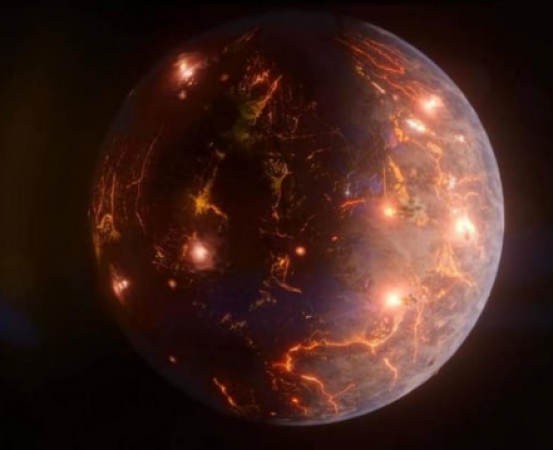
USA: Beyond our solar system, scientists have found an exoplanet the size of Earth that may be rife with volcanoes.Interestingly, scientists believe the extraterrestrial planet might "sustain an atmosphere" given the amount of volcanism that could occur there. Based on information from NASA's TESS (Transiting Exoplanet Survey Satellite), the now-retired Spitzer Space Telescope, and ground-based observatories, the exoplanet, dubbed LP 791-18 d, was found.
The exoplanet LP 791-18 d revolves around a tiny red dwarf star, which is the most prevalent kind of star in the cosmos. The exoplanet, according to astronomers, is "only slightly larger and more massive than Earth."
It is located in the southern constellation Crater, about 90 light-years away.The exoplanet may have as much volcanic activity as Jupiter's moon Io, the solar system's most active volcanic body.
Also Read: FTA negotiation between India and EU is in progress: Goyal
As a result of being tidally locked, LP 791-18 d always faces its star, according to astronomy professor Bjorn Benneke. "It would likely be too hot on the dayside for liquid water to exist on the surface. But given the amount of volcanic activity we believe to exist throughout the planet, it is possible for an atmosphere to exist and for water to condense on the night side.
Also Read: How to we get monetary profit from world's waste?
The newly discovered exoplanet is located close enough to its star for liquid water to possibly exist on its surface. In addition, if the planet is as geologically active as scientists suspect, it might "maintain an atmosphere. Temperatures could drop enough on the planet's night side for water to condense on the surface."
Astronomers already knew about two other extraterrestrial planets in the same system, known as LP 791-18 b and c, prior to the discovery of the new exoplanet. Closer to the star, LP 791-18 b is thought to be 20% larger than Earth. According to NASA, the outer planet, LP 791-18 c, is about 2.5 times as big as Earth and "more than seven times its mass."
Exoplanets d and c cross very closely during each orbit around their host star. Planet d experiences "a gravitational tug" from the larger planet c, which makes its orbit slightly elliptical.Every time the planet d orbits its star, it deforms, and internal friction may heat the exoplanet's interior, causing volcanic activity on the planet's surface.
"A big question in astrobiology, the field that broadly studies the origins of life on Earth and beyond, is whether tectonic or volcanic activity is necessary for life," said co-author Jessie Christiansen.
Also Read: UN report: Plastic pollution could be reduced by 80% by 2040
In addition to "potentially providing an atmosphere," these processes "could churn up materials" that would otherwise "get trapped in the crust, including those we think are important for life, like carbon."
Future reports on the new exoplanet can be anticipated. With the James Webb Space Telescope (JWST), astronomers believe to conduct "atmospheric studies" of the extraterrestrial planet